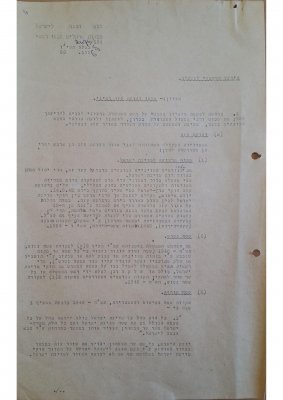How Israel almost, accidentally, annexed the Gaza Strip and the Sinai Desert, and got acquainted with international law on military occupation
Following the Gaza Strip and Sinai Peninsula occupation by the IDF during Suez Crisis, then Attorney General, Haim Cohn, prepared two documents designed to establish the status of the areas the IDF took over during the week of 29 October to 5 November 1956. The documents were sent for approval and signature by then Defense Minister David Ben Gurion (Document 1. Hebrew).
Shabtai Rosen, the legal advisor for the Ministry of Foreign Affairs saw the documents the next day. He was dismayed. He hurriedly explained to Justice Minister Pinchas Rosen if the documents were signed, they would annex the Gaza Strip and the Sinai Peninsula to Israel – in clear contravention of international law.
Shabtai Rosen kept sounding the alarm bell. He spoke to other ministers, and explained the issue in detail in a letter to Foreign Minister Golda Meir (Document No. 2. English translation). The day after he saw the documents, he drafted an official memo on the issue. Rosen stressed that the legal foundations for Israel’s control over the territories it occupied should be the laws of military occupation, as expressed in The Hague Convention and the Fourth Geneva Convention; not unilateral annexation but control by a military administration committed to the interests of the local population, with powers that are articulated and restricted by international law (Document No. 3. English translation). The Military Advocate General backed this position in his own memo (Document No. 4. Hebrew).
Rosen’s position was accepted. Israel’s control of the Gaza Strip in 1956-7 was based on the international laws of occupation. The moment of transition between the two legal concepts, captured in the documents presented here, marks the beginning of Israel’s long relationship with the international laws of occupation.
















